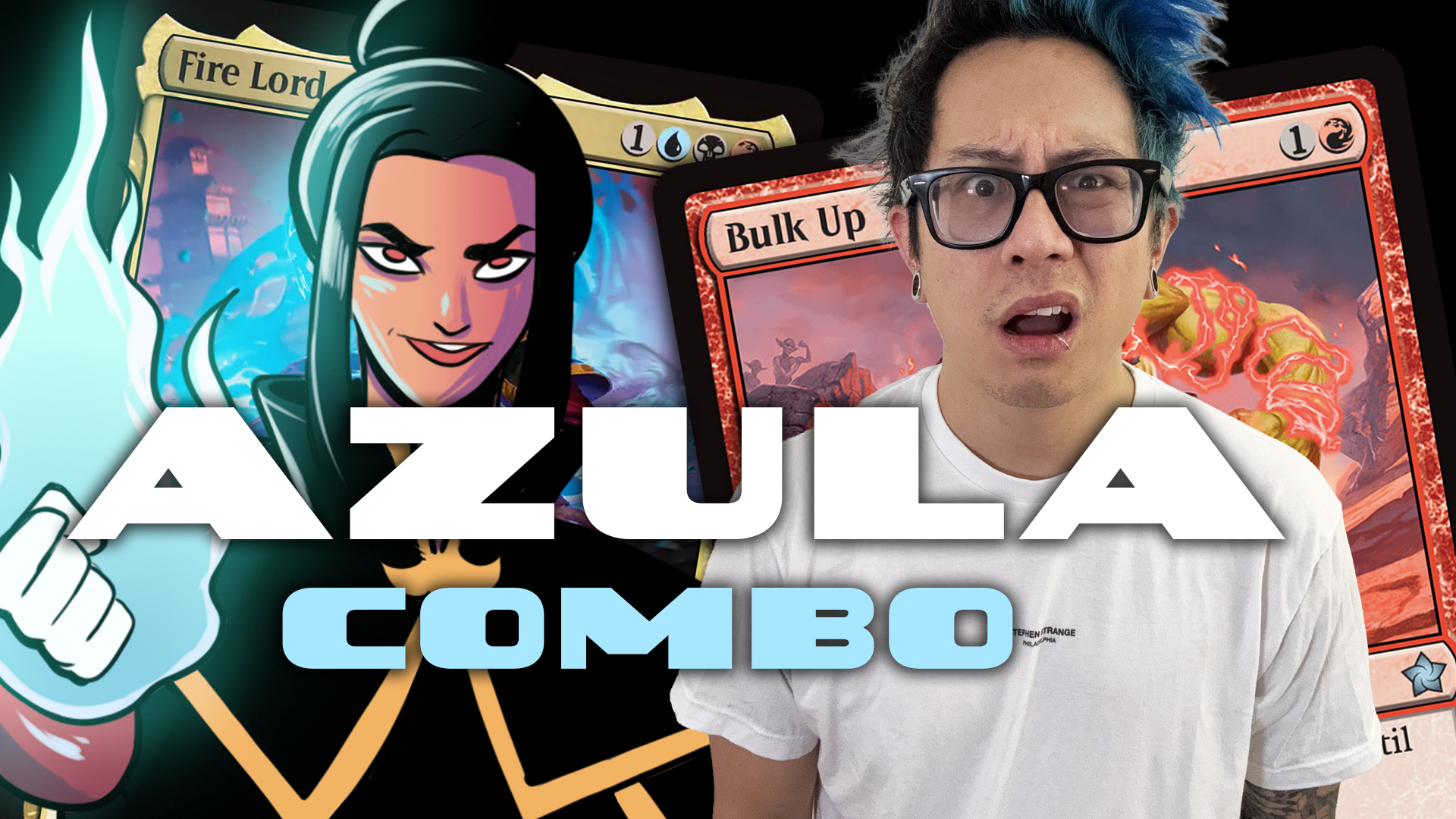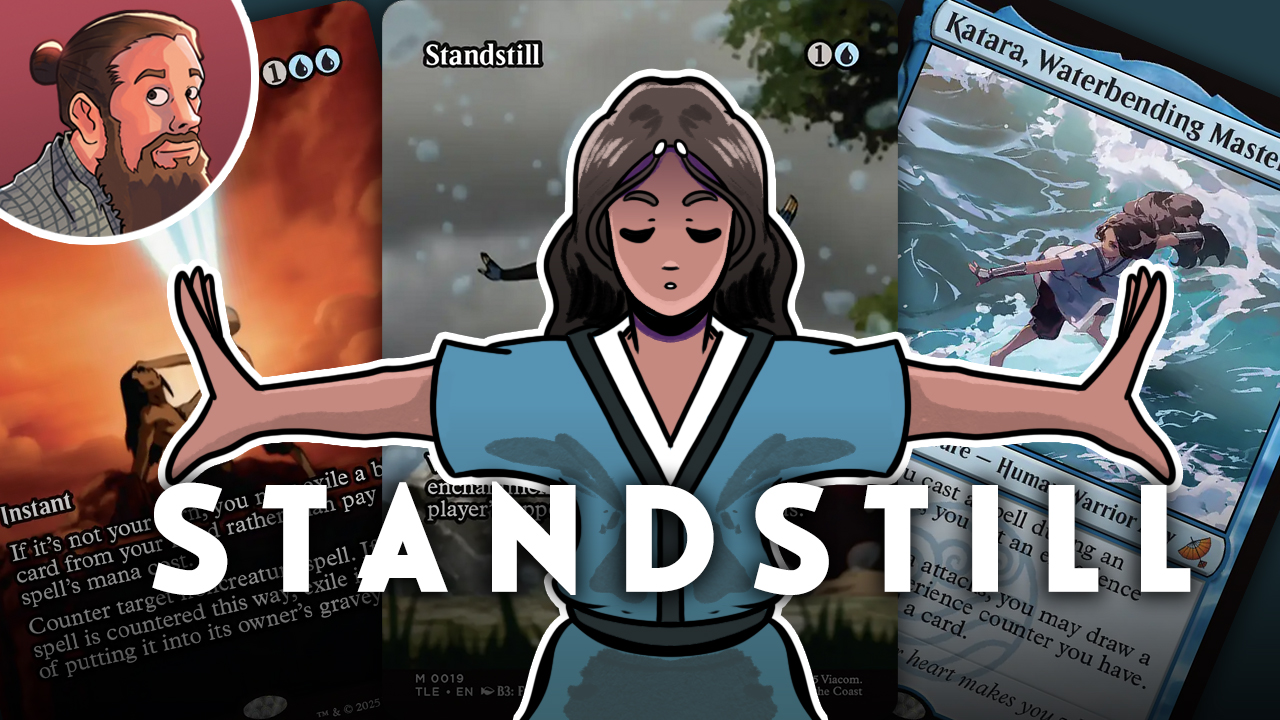Budget Magic: $98 (28 tix) Nevermore (Modern)
നമസ്കാരം, Budget Magic lovers, it's that time again! A few days ago I realized that it had been a while since we've played a deck focused on locking our opponent out of the game, and considering that Free Win Red is my all time favorite deck, it seemed like we were due for a budget-friendly prison deck. As such, this week we are heading to Modern for a deck that I'm calling Nevermore, named for one of the key lock pieces in the deck. Maybe the easiest way to think about this deck is as "free win white," because while the cards are very different, at least in theory the deck plays like a budget-friendly version of Free Win Red. Our primary goal is to keep our opponent from playing any relevant cards, and then lock out any potential answers they may have by playing enchantments that keep our opponent from casting specific spells. After we get our opponent completely locked out of the game, we can win at our leisure with one of our handful of finishers! Let's get to the videos so you can see what I'm talking about, and then we'll break down the deck.
First, a quick reminder: if you enjoy the Budget Magic series and the other video content on MTGGoldfish, make sure to subscribe to the MTGGoldfish YouTube Channel to keep up on all the latest and greatest.
Nevermore Deck Tech
Nevermore vs Moon Bridge Burn (Match 1)
Nevermore vs U-Tron (Match 2)
Nevermore vs GB Infect (Match 3)
Nevermore vs Esper Control (Match 4)
Nevermore vs Sun and Moon (Match 5)

The Deck
I'll warn you right off the bat: Nevermore is a hard deck to play because being successful with the deck is all about knowing what cards are in your opponent's decks. While we have a couple of cheat cards that let us look at our opponent's hand, it's still a challenging deck to play well if you're not up on the big decks in Modern. The good news is that we have answers for all types of decks, so with careful naming and a bit of luck, we can beat just about anything in the Modern format! The easiest way to break down the deck is to look at our various lock pieces and talk about their purpose and how they interact with the rest of our cards.
Spell Locks


Nevermore and Gideon's Intervention are very similar in our deck, and it was the printing of Gideon's Intervention in Amonkhet that makes our Nevermore deck possible since it gives us so much more redundancy with the "can't be cast" effect. Nevermore is pretty simple: we name a card and that card can't be cast, which means it's very good at locking things out of the game before they are played, but doesn't do much after a threat is already on the battlefield. Gideon's Intervention is a bit more clunky thanks to its more expensive mana cost, but makes up for this by actually dealing with permanents on the battlefield as well by preventing their damage. The best example of this is when we named Eidolon of the Great Revels against Burn, allowing us to play all of our spells while our opponent nearly killed themselves with their own Eidolon of the Great Revels before finally spending a Path to Exile to kill it.
Having eight Nevermores is huge because they actually get better in multiples. Normally we use our first copies to lock out our opponent's most important threats, and then we can use later copies to lock our answers to our earlier copies like Detention Sphere, Abrupt Decay, and Wear // Tear. The biggest trick to both of these cards is that we really, really want to use them to lock spells out of the game if possible. As we go along you'll see that we have tons of ways to deal with creatures, and even quite a few ways to deal with planeswalkers and other non-creature permanents, but almost no other main deck way to deal with spell-based kills like Scapeshift, Conflagrate, or Ad Nauseam. Of course, this is dependent on the matchup and sometimes it's correct to name creatures or other permanents, but if the decision is close, it's usually better to try to name a spell with either Nevermore or Gideon's Intervention.
Maybe the most impressive part of these cards is their ability to give us free wins in certain matchups. For example, against UR Storm, if we can name Grapeshot (and maybe Empty the Warrens), our opponent pretty much can't win the game. Against Scapeshift, Nevermore on Primeval Titan and Scapeshift is basically game over. Naming the namesake Living End and Beast Within against Living End pretty much locks our opponent out of the game. Even in matchups where our Nevermores don't win us the game, they are often still quite strong; losing a key card like Death's Shadow, Karn Liberated, or Collected Company is a big hurdle for a lot of decks.


Telepathy and Peek are our cheat cards—they let us know what is in our opponent's hand which greatly improves our ability to name the right card with Nevermore and Gideon's Intervention. While it sounds weird, if our opponent has two copies of Tarmogoyf in hand, naming it with Nevermore is pretty close to a life-free double Thoughtseize in white, and knowing what's in our opponent's hand allows us to make these type of plays. Peek is super low opportunity cost since it only costs one-mana and doesn't cost us a card since it cantrips. While Telepathy probably looks strange, it's actually fairly strong in our deck. Even though it is card disadvantage, the information we gain is helpful and in many matchups it's worth more than a card thanks to how much it improves our Nevermore naming while also benefitting some of our other cards that care about enchantments.
Creatures Locks


Sphere of Safety and Ghostly Prison are the reasons why we try to avoid naming creatures with Nevermore. In the early game Ghostly Prison helps us stay alive, and in the late game Sphere of Safety becomes an upgraded Ensnaring Bridge that doesn't care about the number of cards in our hand.
Maybe the sweetest part of the deck is how our enchantments support each other. Nevermore and Gideon's Intervention (along with Telepathy) are enchantments that help make sure our Sphere of Safety is a hard lock, while Sphere of Safety and Ghostly Prison make sure that we can spend our Nevermores and Gideon's Interventions on impactful spells and potential answers rather than random creatures. They also help make up for each others weaknesses. In matchups where Ghostly Prison is bad (because our opponent doesn't have many or any creatures), Nevermore and Gideon's Interventions are often close to free win cards. Likewise, in matchups where Nevermore and Gideon's Intervention aren't great (for example, against very aggressive creature decks like Zoo or Goblins), Sphere of Safety and to a lesser extent Ghostly Prison are super strong.
Land Locks

Spreading Seas is great in our deck. It's primary purpose is to give us a chance against Tron decks which would be a horrible matchups otherwise, but the enchantment is fine against creature-lands and can occasionally color screw our opponent if they keep a land-light hand. The opportunity cost of running it is pretty low since it cycles, and it's even an enchantment to help pump up our Sphere of Safety!
Filling in the Gaps



Along with pumping up our Sphere of Safety, our enchantment-based removal takes a lot of pressure off of our lock pieces by picking off things that happen to slip through the cracks. For example, when we played against Sun and Moon, our opponent's primary win condition was Nahiri, the Harbinger (which is a great card to name with Nevermore), however they also had perhaps one copy of Ajani Vengeant which can still win the game. Naming a one-of with Nevermore often feels like a waste, so instead of spending one of our limited number of Nevermores on it, we can simply clean it up after it hits the battlefield with Cast Out or Detention Sphere. Thanks to our removal, we don't have to lock every single card in our opponent's deck out of the game before it hits the battlefield since we can fill in the gaps with Journey to Nowhere, Detention Sphere, and Cast Out.



Condemn and Path to Exile give us ways to deal with creatures in the early game to make sure that we live long enough to get our Ghostly Prison / Sphere of Safety lock. Normally I'd just play four copies of Path to Exile, but Condemn helps keep the cost of the deck down and is pretty good in a metagame where Death's Shadow is the best deck. Meanwhile Day of Judgment gives us a catch-all to deal with our opponent's creatures and comes down a turn before Sphere of Safety, which can be important against aggressive creatures-based decks.
Finishing the Game


While our main goal is to lock our opponent out of the game, we do need to kill our opponent sooner or later, and for this we turn to Elspeth, Sun's Champion and Aetherling. The main criteria for our finishers is they need to be hard to deal with (because we only have two total copies in our deck), and also close out the game quickly, giving our opponent less turns to draw out of the lock. Elspeth, Sun's Champion can wrath away some big creatures in a pinch, but mostly just ticks up for three turns making a bunch of 1/1 Soldier tokens, and then ultimates to make our tokens 3/3 fliers to close out the game. The flying part is pretty important because our opponent's board sometimes gets clogged up with creatures that can't attack thanks to Sphere of Safety.
As for Aetherling, it's actually amazing in our deck. Most of the time the six-drop is a bit slow for Modern, but our deck does such a great job of slowing down the game that we can take advantage of Aetherling's power. The most important thing here is that Aetherling is pretty much unkillable—generally we want to wait until we have mana up to blink it to make sure it doesn't die the turn we cast it, and after that we can make sure to keep up mana to protect it. It closes out the game quickly thanks to its pump ability that allows it to hit for eight damage a turn. We can also make it unblockable, which makes it another great way of closing out the game through a big board stall.
The Sideboard


We won't spend too much time on the sideboard, but there are a couple of important things to be aware of. One of the downsides of playing Ghostly Prison and Nevermore is that both cards are very matchup dependent so we dedicate a lot of our sideboard to cards that can come in when one or the other of our primary lock pieces are bad. In matchups where Ghostly Prison and Sphere of Safety are bad (against spell-based combo and creature-light control decks), we can bring in all four copies of Negate and two Dispels. Likewise, when we run into matchups where Nevermore and Gideon's Intervention are bad (against fast creature decks), we can bring in more Condemns, Timely Reinforcements, and Blessed Alliance to deal with our opponent's creatures, make chump blockers, and gain some life.
Wrap Up
Recording the matches was pretty weird this week. Apart from our video matches where we finished with a 3-2 record, we also ran into a bunch of slightly modified versions old Budget Magic decks, going 1-1 versus Fruity Pebbles (the loss being to a really silly punt where we had a Telepathy to see our opponent's hand, which revealed that our opponent had the combo, but then accidentally played an enters the battlefield tapped land which didn't let us leave up Cast Out to break up the combo) and also beating an ultra-budget version of Little Kid GW that was playing all basic lands. We also lost a duplicate matchup against control. This means our overall record with the deck was 5-4.
We also learned that Gideon's Intervention is weirdly bugged on Magic Online. While it seemed to work properly most of the time, in our match against Esper Control, we had a copy naming Snapcaster Mage, but it wasn't preventing the damage that Snapcaster Mage was dealing.
The biggest problem with the deck is that it can be inconsistent, especially in game one. If we happen to draw the wrong half of our deck (like all Ghostly Prisons against UR Storm or all Nevermores against Zoo) we can struggle. The good news is we have a ton of raw power and have the right options to deal with just about any deck in the format. Most decks don't have many ways to deal with enchantments, and what few ways they do have we can lock out with Nevermores. Most importantly, the deck is really fun and challenging to play. Trying to figure out the right card to name against each deck means there's always a ton of important decisions to be made, and when we make our choices well we are usually rewarded with a win!
Ultra-Budget Nevermore

Apart from trimming back the mana base as far as possible (which will cause some issues thanks to four more lands that enter the battlefield tapped and to a lesser extent because we lose the scry from Temple of Enlightenment), we don't have to change too many cards to get into the ultra-budget price range. The biggest loss is Elspeth, Sun's Champion, and while Aetherling is the better finisher for the deck (so having two is fine), this plan is a bit risky because something like Thoughtseize on Aetherling and then Surgical Extraction would leave us with no win conditions at all. The other cut is Path to Exile which gets replaced by Journey to Nowhere, and while this change hurts a little bit because it makes our removal slower, it isn't as much of a problem now as it was a year ago when instant speed removal was essential thanks to the decline in popularity of Infect. All in all, this build should be fine for locking your friends on the kitchen tables, but I'd want to upgrade a bit before taking it to a tournament.
Non-Budget Nevermore

Non-budget Nevermore gets a big makeover, mostly because Chalice of the Void is too good not to play. Since our plan is to play the artifact with one counter to lock out Death's Shadow, we can't play any one-mana cards of our own which means we lose both Peek and Telepathy (along with Path to Exile, which isn't a big deal since we have a ton of removal and can replace it with more Journey to Nowheres). While having the ability to look at our opponent's hand is nice and does lead to some cool plays, in most matchups we should already have a good idea of what to name and the free-win power of Chalice of the Void more than makes up for the loss of information. We also get Meddling Mage as another Nevermore for even more lock potential. Otherwise we mostly upgrade the sideboard with Stony Silence, Leyline of Sanctity, and Rest in Peace, all of which are free win cards in their own right, but only in specific matchups. While the deck should play mostly like the one in the videos, Chalice of the Void is a huge upgrade because it helps shore up a weakness against very aggressive creature decks and also further relieves the pressure on our Nevermores and Gideon's Interventions by locking all one-drops by itself.
Conclusion
Anyway, that's all for today. As always, leave your thoughts, ideas, opinions and suggestions in the comments, and you can reach me on Twitter @SaffronOlive, or at SaffronOlive@MTGGoldfish.com.













